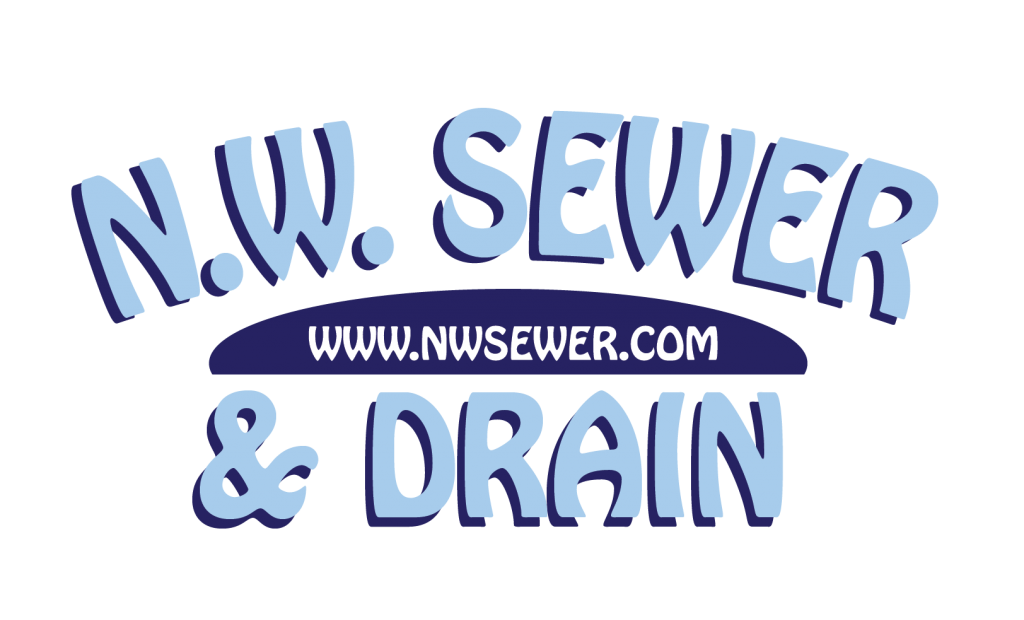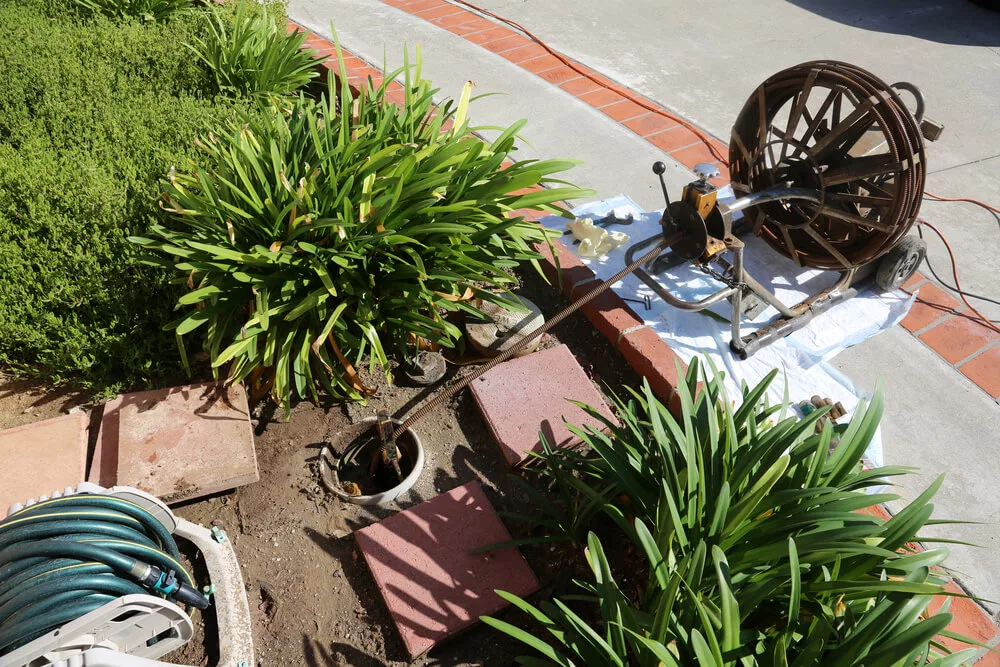Experiencing a frustrating drain clog in your home? You can try to clear the clog using residential pipe cleaning methods like pouring boiling water down the affected drain, pouring a mixture of baking soda and vinegar in the drain, or using a plunger with hot water.
There are other methods that are equally effective, but the most effective drain cleaning methods are drain snaking and hydro-jetting. But which is better? While you can perform snaking yourself, it is not always advisable to do it by yourself if you have no experience on how to conduct proper drain snaking.
Hydro-jetting, on the other hand, is also a very effective method for removing debris from both residential and commercial pipes. However, it is often reserved for more serious pipe cleaning, such as extensive root invasion and stubborn clogs. While drain snake service uses a cable machine to dislodge clogs and is the most affordable option, hydro-jetting is used for more massive clogs that won’t respond to other pipe cleaning methods.
What is Drain Snaking?
A drain snake is a long, flexible metal cable with an auger or a small uncoiled spring on one end and a handle on the other end. When inserted into a clog, the uncoiled spring rotates, breaking up the blockage in the drain so it can be easily flushed away.
Snaking a drain is the next preferred pipe-cleaning method when you cannot remove the clogs with a plunger. Some people call the drain snake (also called plumber’s snake) a toilet jack. Homeowners can use the drain snake to clear their clogged drain pipe or sanitary sewer. But it can potentially damage the pipes if not properly done. Unless you are conversant with the process for snaking your drain, we typically recommend that you contact your local sewer and drain specialist.
Types of Drain Snakes
There are a few types of drain snakes used by plumbers to eliminate clogs from pipes. The most basic ones are the hand-held augers, which are long springs usually inside a metal canister or plastic until needed. Hand-driven augers or drain snakes are useful for clearing residential clogs like toilet or shower drain clogs that are not more than 6-8 feet long from the auger.
Moving away from hand-held augers, drain specialists also use motor-driven augers to unclog blocked drains at homes or in commercial buildings, but they are for clearing more stubborn dirt and grease clogs (typically about 90% of clogged drains). These snake cables have diameters ranging from ¼ inch to one inch.
However, if you’re looking for drain snakes that are powerful enough to clear drain obstructions, such as tree roots, you can go for the more powerful motorized augers. These large-scale pipe-cleaning machines can clear drain and sewer lines with diameters ranging from one inch up to 8 inches. They are more suited for outdoor drain cleaning.
Disadvantages of Drain Snaking
For the most part, the drain snaking method is not preventive. It is not the best option for removing stubborn stains. The auger is mostly able to clear clogs from a space not bigger than its size, meaning that some clumps of waste or gunk may still remain on the pipe walls after snaking. In this case, the clog can build up again.
Also, if the auger is not properly handled, it can destroy your drain pipes.
What is Hydro-jetting and How Does it Work?
Hydro-jetting is the best drain cleaning technique for removing almost all kinds of debris from your drain pipes. Compared to drain snaking, hydro-jetting is a more advanced, efficient, eco-friendly, and non-invasive drain cleaning option. This is why most sewer and drain specialists recommend it today. Hydro-jetting uses a stream of pressurized water ejected from a small nozzle to dislodge clogs and clumps of waste clinging to the walls of your drain pipes.
Hydro-jetting drain cleaning method does not impact any harm to your drain pipes, and it is suitable for both residential and commercial plumbing systems. As the stream of high-pressure water is passed into the pipes, it effectively removes all the waste in the drain pipe. Although hydro-jetting is very effective, it is not always the most ideal solution in all situations.
Because of the high pressure of the water, hydro-jetting is usually not recommended for use in weak or old pipes. This is to avoid causing further damage to the already weak pipes. At N.W. Sewer and Drains, we conduct a preliminary inspection of your pipes using a sewer camera (a specialized camera for viewing the inside of drain pipes). If hydro-jetting will negatively impact the integrity of the pipes, drain snaking may be used.
Disadvantages of Hydro-jetting
The only significant con as it applies to hydro-jetting is that it can be too much for older and weaker drain pipes to handle.
Before deciding to use hydro-jetting or any of these drain cleaning options, we recommend speaking with a trusted local sewer and drain specialist.
Speak With Your Local Sewer and Drain Specialist
Not sure which to choose between drain snaking and hydro-jetting? You can reach out to us today at N.W. Sewer and Drains. We’re excited to help you sort out any drain issues you might be facing in your home or office building. Ideally, consulting an experienced local sewer and drain cleaning company should be your next line of action if you are experiencing slow-moving drains, bad odor, or clogged drains in your home, and you don’t know what else to do.
At N.W. Sewer & Drain, we have a well-trained and ready-to-move team on standby. We serve the Seattle metropolitan area, including Bellevue, Kirkland, Shoreline, Renton, Lake Forest Park, Mountlake Terrace, Auburn, Everett, Marysville, Mount Vernon, and other surrounding areas.
N.W. Sewer & Drain provides top-notch drain cleaning and sewer repair services in the greater Seattle area, and we’ve been in the business for nearly 20 years. Contact us today at 206-931-7728 to schedule an inspection of your sewer line and pipes.
Frequently Asked Questions on Effective Drain Cleaning Methods
1. What is the most effective way to clean a clogged drain?
The most effective way to clean a clogged drain is using a professional method like hydro-jetting. This technique uses high-pressure water to blast away stubborn clogs and debris from your pipes. It’s more thorough than traditional methods like plunging or snaking, ensuring your drains are clear and free-flowing.
2. How does hydro-jetting compare to drain snaking?
Hydro-jetting is more powerful and efficient than drain snaking. While a drain snake uses a rotating metal cable to break up clogs, hydro-jetting uses high-pressure water to clean the entire pipe, removing all debris and buildup. This makes it ideal for serious blockages and long-term maintenance.
3. Is hydro-jetting safe for all types of pipes?
Hydro-jetting is generally safe for most plumbing systems, but it might not be suitable for older or fragile pipes. The high pressure can cause damage to weak pipes. It’s always best to have a professional inspect your pipes before opting for hydro-jetting to avoid potential issues.
4. Can I perform hydro-jetting myself?
Hydro-jetting should be left to professionals. It requires specialized equipment and expertise to operate safely and effectively. Attempting DIY hydro-jetting can result in damage to your pipes or personal injury. Hiring a professional ensures the job is done correctly.
5. What are the signs that I need hydro-jetting for my pipes?
Signs that you might need hydro-jetting include frequent clogs, slow drains, bad odors, and recurring plumbing issues. If plunging or snaking isn’t solving the problem, hydro-jetting can provide a more comprehensive solution by thoroughly cleaning your pipes.
6. How often should I have my drains hydro-jetted?
The frequency of hydro-jetting depends on your plumbing system and usage. For residential properties, having your drains hydro-jetted every 1-2 years can prevent major clogs and maintain optimal flow. Commercial properties may require more frequent maintenance due to higher usage.
7. Are there any disadvantages to using a drain snake?
While drain snaking is effective for minor clogs, it has some drawbacks. It can only clear blockages within its reach, leaving some debris behind. Additionally, improper use can damage your pipes. For stubborn clogs or comprehensive cleaning, hydro-jetting is a better option.
8. How can I prevent future drain clogs?
Preventing future drain clogs involves regular maintenance and mindful usage. Avoid pouring grease, coffee grounds, and food scraps down the drain. Use drain screens to catch hair and debris, and consider scheduling periodic professional cleanings to keep your pipes in top condition.
9. What should I do if my drain snake isn’t working?
If your drain snake isn’t working, it might be time to call in the professionals. Persistent clogs can indicate a more serious issue that requires advanced techniques like hydro-jetting. A professional plumber can assess the situation and recommend the best course of action.
10. How do I choose between hydro-jetting and drain snaking?
Choosing between hydro-jetting and drain snaking depends on the severity and nature of the clog. For minor, localized clogs, snaking might suffice. However, for persistent, widespread, or severe blockages, hydro-jetting provides a more effective and long-lasting solution. Consulting with a plumbing expert can help you make the best decision.



